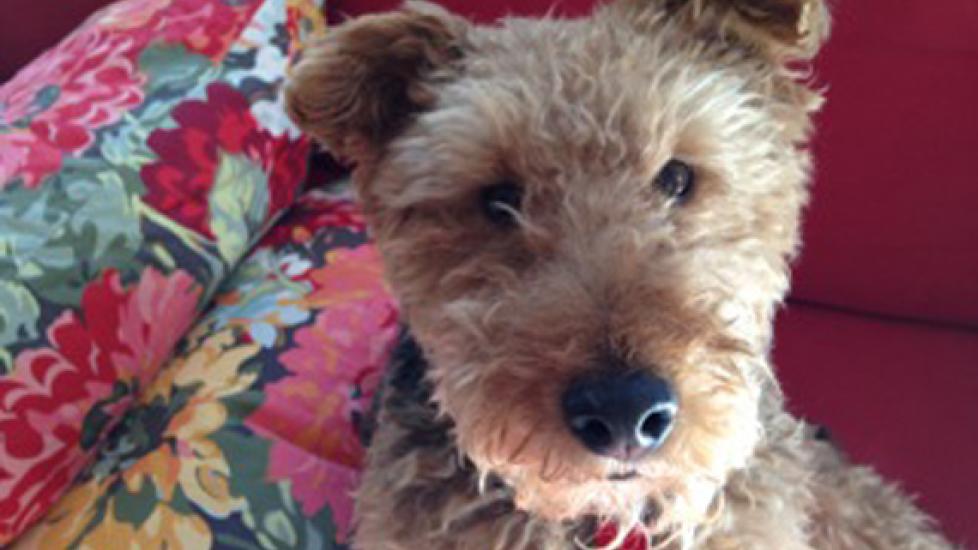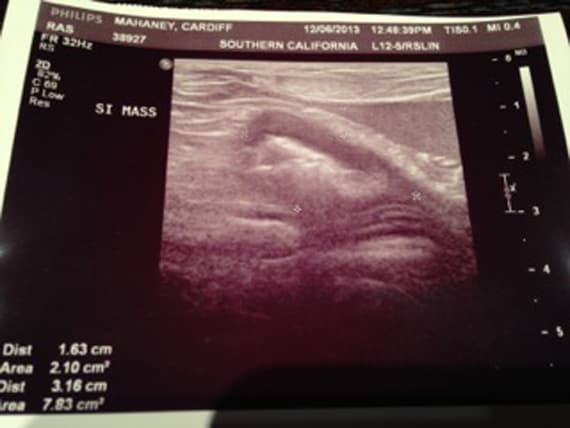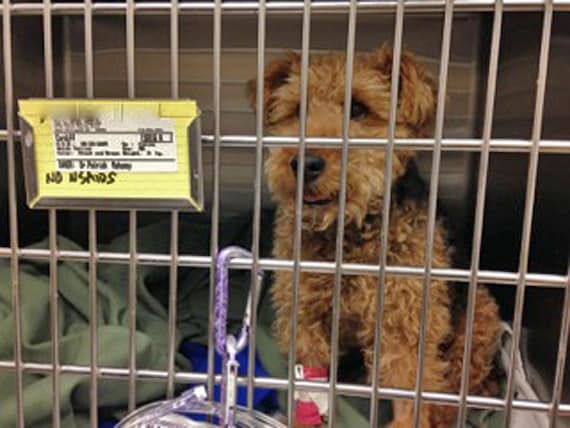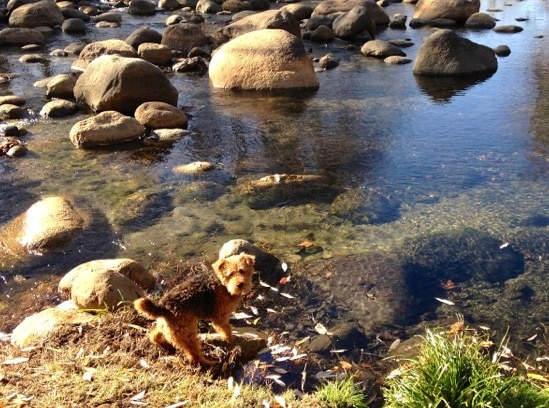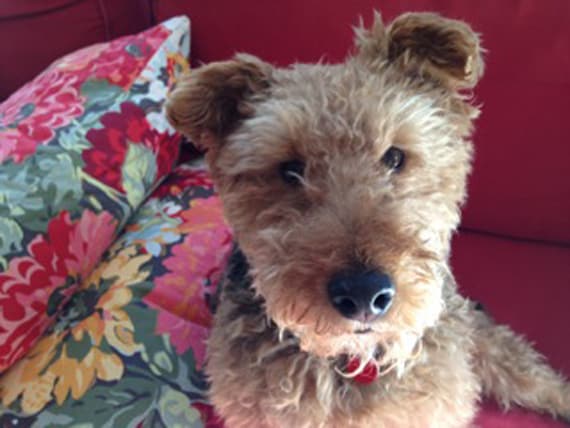A Veterinarian's Experience with Treating His Dog's Cancer
In late 2013, an ultrasound revealed that Cardiff had a small intestinal mass. Surgery was performed to remove the growth and the biopsy revealed the diagnosis of T-cell lymphoma. Although the tumor was completely removed and no other evidence of cancer was found in Cardiff’s body, the potential exists that other cancer cells could still be present in his tissues.
A concrete plan was needed to manage Cardiff’s disease on a long-term basis. If he received no chemotherapy, then these cells would likely continue to prosper and new masses or other cancer-related illnesses could develop. So, we are now undergoing the long term process of regular chemotherapy treatments.
As I’m not a veterinary oncologist, I defer to the more educated brains at the Veterinary Cancer Group (VCG). Fortunately for us, Dr. Mary Davis will be overseeing Cardiff’s chemotherapy.
Cardiff is being treated with the University of Wisconson-Madison Canine Lymphoma Protocol. This six-month protocol involves administering series of oral or injectable medications known as CHOP, which stands for Cyclophosphamide, Hydroxyadaunorubucin (Doxorubicin), Oncovin (Vincristine), and Prednisone.
The rationale behind this CHOP is to treat on an every 7 day (to start) to every 14 day (after 12 weeks) basis to expose cancer cells having different life stages to multiple drugs. According to Dr. Lily Duda, professor of radiation oncology at the University of Pennsylvania and Oncolink editor (and one of my oncology professors at Penn), “The theory behind combining drugs is that there are many subpopulations of cancer cells, and some of the populations will be resistant to drugs a and b, but sensitive to c; others will be sensitive to c, but not a or b, etc. In addition, some drugs act synergistically, so that the effectiveness of two drugs together exceeds that of the simple sum of each drug individually.”
Although I’ve been involved in providing holistic perspective to the treatment processes of cancer patients at the Veterinary Cancer Group since 2011, I’ve never had a patient undergoing the CHOP protocol. Partaking in Cardiff’s chemotherapy treatment process will truly be a first for me.
Of course, the more holistic part of my clinical brain questions if I should even provide Cardiff with the lengthy and potentially illness-inducing protocol. After all, the surgery completely removed his tumor and there was no clinical evidence that it had metastasized (spread) to other body parts. Would Cardiff have as long and good of a quality of life if he did not undergo chemotherapy treatment? Likely, no.
If I had the awareness, resources, and veterinary connections to put Cardiff through treatment and did not do so due to my concern for the side effects he may suffer, I’d feel horrible if he quickly had a recurrence of lymphoma.
Fortunately, Dr. Davis enlightened me that the CHOP protocol would be tailored specifically to Cardiff’s small size and would likely be well tolerated by his body. The drugs used in chemo protocols kill rapidly dividing cells, both cancerous and non-cancerous, including those in the bone marrow and digestive tract. So, the most common side effects dogs undergoing the CHOP protocol experience are immunosuppression, decreased appetite, and diarrhea.
As I have many pieces of ammunition in my veterinary-supportive-care kit, Cardiff will also be getting medications, herbs, nutraceuticals, acupuncture, fluid therapy, vitamin injections, and more to help his body through this process.
One of the questions I’ve been asked more times than I can count is, “Will Cardiff lose his hair?” No, Cardiff will not likely lose his hair, but his luscious auburn and black locks may not grow as well during his chemotherapy treatments.
As Cardiff’s abdomen was shaved for surgery and his front limbs clipped for intravenous catheter placement, his coat is currently looking somewhat mismatched. I’m pleased to see there’s new hair growing at these sites, so he’ll get a full body clip in the coming month to help even out his look.
Cardiff was given three weeks to completely heal from surgery before we started chemotherapy. Plus, we wanted Cardiff to feel as good as possible for a short New Year’s getaway to Three Rivers, CA. While there he got to spend much time energetically playing with his golf ball in the river adjacent to our rented house and acted pretty much like his normal self.
It’s now 2014 and the chemo show must go on. A honeymoon trip to Hawaii in late January has been canceled along with any travel requiring both of Cardiff’s dads to be away from him until he completes his chemotherapy course. Of course, Cardiff's treatment is worth every minute I would have spent relaxing on the beach and snorkeling among Hawaii’s exotic fish.
Cardiff's radiology image
Cardiff during his 24 hours post-surgical hospitalization
Cardiff on holiday in Three Rivers, CA, doing what he does best
Cardiff’s life goes back to normal before starting chemotherapy
Note: This is the third part in Dr. Mahaney's series of posts in which he shares his medical and personal experience with treating his own dog's cancer (and with a little help from some veterinary friends). You can read parts 1 and 2 of Cardiff's story here:

Dr. Patrick Mahaney
